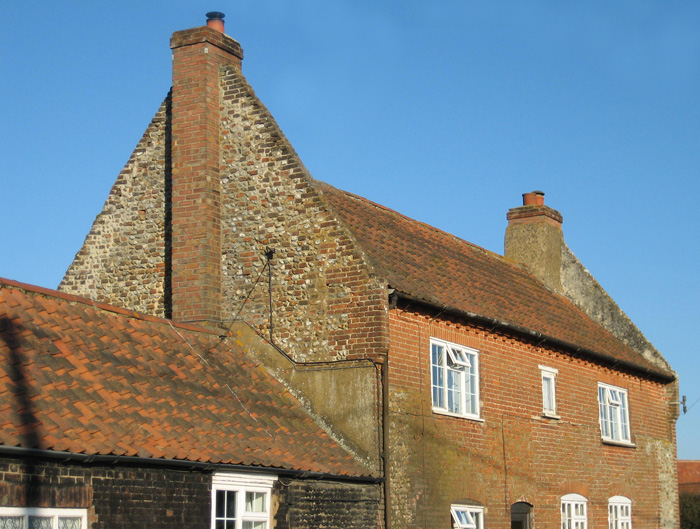Actually, before I go on to Tibby’s Triangle, as promised in the last post, this might be the moment to throw this in: a house in East Bilney on the Dereham to Fakenham road. I drive past it from time to time, and have always enjoyed the way the lower-pitched pan-tile roof hunkers down between the steep gables which indicate the building was originally thatched.
Were it not for Ruralise, I would probably never have bothered to stop to take a snap, but I’m glad I did. I had always assumed that the ridge had been lowered when the thatch was replaced by pan-tiles, but looking closely at the photo you can see that this was originally a one-and-a-half storey house and the front wall has been built up to make a ‘proper’ first floor. I think the ridge is in fact in its original position, but appears so far below the line of the gable only because the tiles are so much thinner than the thatch they replaced. If that’s right, the house would have been quite unusual in that the brick gables originally masked the verge of the thatch; a thatched roof more usually overhangs on eaves and verge – like an oversized, rather shaggy hat.
That was why I took the photo – back in May or June – but it wasn’t why I’ve come back to it just now. I’ve put it up here because it gives the hitorical/regional reference for the colour-scheme of the houses at Manor Close in Walberswick, which I described in the previous post. Pan-tiles, red brick, white windows, black walls…although the black here is not stained weatherboarding but black tar-paint, used to weather-protect the soft brick and lime mortar of the out-house, which must have had damp problems in the past. In fact now I think about it, this observation about tar-paint will serve as a rather useful bridge to Tibby’s Triangle, as will become clear…

